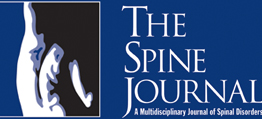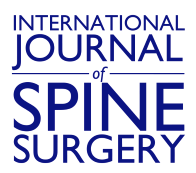
Abstract
BACKGROUND CONTEXT: Subsequent surgical procedures subject patients to additional risks and continue to be a driving force for success rates and treatment cost-effectiveness. Previous results have shown TDR to produce lower rates of subsequent surgical intervention than ACDF within a 4-year follow-up window. Here, we present 5-year subsequent surgery rates of patients treated with one and two-level TDR and ACDF.
PURPOSE: To evaluate 5-year subsequent surgery rates of one and two-level TDR and ACDF patients.
STUDY DESIGN/SETTING: The study was conducted as part of a prospective, randomized, multicenter concurrently controlled clinical trial conducted across 24 sites in the US.
PATIENT SAMPLE: The patient population consisted of 575 randomized patients in a 2:1 ratio (1-level TDR: 1-level ACDF: 2-level TDF: 2-level ACDF). Twenty-five TDR training cases were also included in the analysis. For the 1-level arm, 179 patients were treated with TDR and 91 with ACDF. For the 2-level arm, 234 patients were treated with TDR and 105 ACDF. Inclusion criteria included a diagnosis of symptomatic cervical degenerative disc disease at one or two levels with no history of previous operations on the cervical spine.
OUTCOME MEASURES: Patients undergoing subsequent surgery were further classified as having (1) index only, (2) index and adjacent or (3) adjacent-only level surgery. Subsequent surgeries that did not indicate a study failure such as hematoma evacuations and surgeries noncervical, adjacent levels (C7 – T1) were included in the analysis.
METHODS: TDR Patients were treated with Mobi-C© artificial disc (LDR Spine USA). ACDFI patients were treated with allograft and anterior plate and screw instrumentations. Outcome measures were collected as baseline, 6 weeks and at 3, 6, 12, 18, 24, 36, 48, and 60 months postoperatively.
RESULTS: AT 5 years, 4.47% of the one-level TDR patients had subsequent surgery with 1.68% having an index only surgery, 1.12% having an adjacent and index surgery, and 1.68% having an adjacent only surgery. For one-level ACDF patients, 17.9% of patients had a subsequent surgery with a breakdown of 6.17% index only, 6.17% adjacent and index, and 4.94% adjacent only surgery patients. For the two-level treatment arm, 6.84% if TDR patients (4.70% index only, 0.43 adjacent and index, and 1.71% adjacent only), and 21.0% of ACDF patients (9.52% index only, 8.57% index and adjacent, and 2.85% adjacent only) had subsequent surgical intervention. Differences between the total subsequent surgery rates of TDR and ACDF patients were significant for both one-level (p=0.00008) and two-level (p=0.0002) treatment. When groups were analyzed based on surgery classification, no significant differences were observed in rate of index only or adjacent only surgeries for either cohort. However, one-level TDR patients did have a lower rate of surgeries involving both and adjacent and index level surgeries (p=0.032). Two-level TDR patients also showed a lower rate of subsequent surgeries performed at both and adjacent and index level (p=0.00002). Tow TDR patients and 1 ACDF patient in the one-level treatment arm and 2 TDR patients and 3 ACDF patients in the two-level arm, ultimately had more than one subsequent surgery. When analyzing causation for secondary surgeries, the one-level ACDF patients had a significantly higher rate of adjacent level indications (p=0.004) as did the two-level ACDF patients (p=0.0004) when compared to ACDF.
To Read The Full Article Click Here





